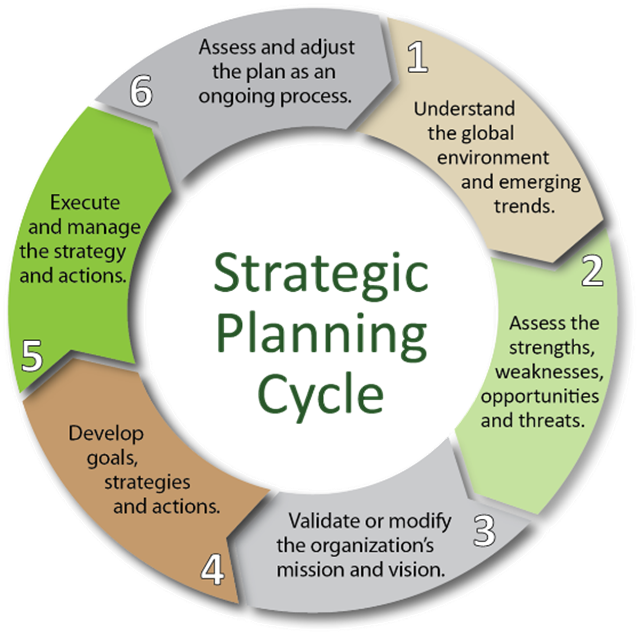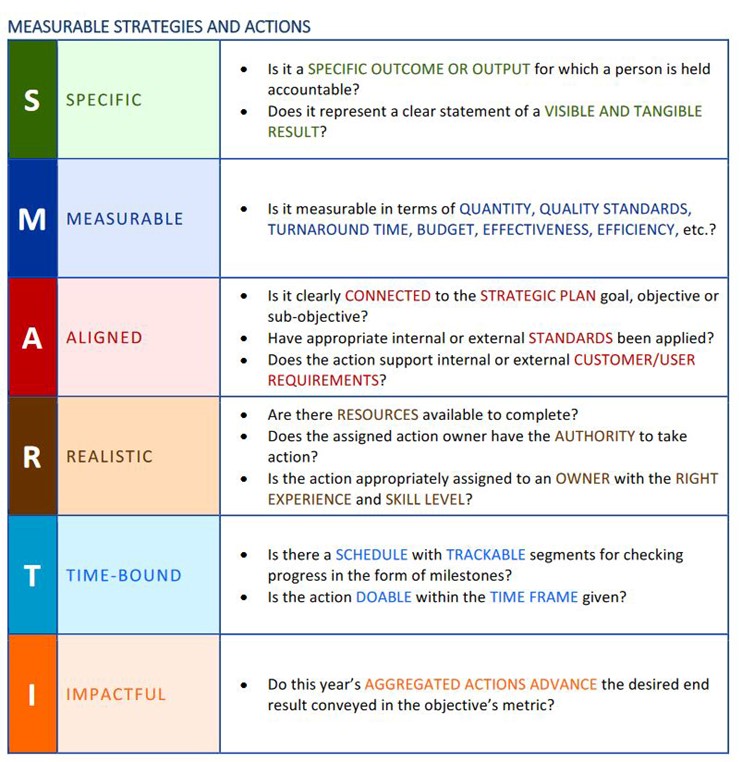 In the past few months, associations have found it challenging or impossible to hold in-person strategic planning sessions due to global pandemic restrictions. However, strategic planning sessions are essential for organizations to chart their paths forward, and alternative approaches must be explored.
In the past few months, associations have found it challenging or impossible to hold in-person strategic planning sessions due to global pandemic restrictions. However, strategic planning sessions are essential for organizations to chart their paths forward, and alternative approaches must be explored.
Typically, strategic planning sessions require an in-person format and last 1 ½ - 2 days. This year the pandemic has impacted travel, participation numbers, and engagement spacing. A virtual format is the most viable alternative given existing constraints.
This trend is the new reality for many associations, including a client of Capital Association Management, an AMCI-accredited association management company in Washington, DC. This medium-sized ($1.5 million in annual revenue) certification-based association servicing a specialized niche in the construction industry planned to hold an in-person Board strategic planning session shortly after its annual conference in April. Needless to say, plans were tabled after the COVID-19 pandemic began. And after consulting with our firm, the Board ultimately decided to hold a virtual session in August. The strategic planning meeting was held for a total of 12 hours over 3 days. While it was different from historical strategic planning meetings with participants seated around a big table in one room, it ultimately was successful.
“I’ve been through several strategic planning sessions over the years and this was probably the smoothest and most focused I’ve ever experienced, especially given the circumstances!”
Mark Gelfo, PE, CxA, EMP, LEED Fellow, ACG Board Member
So, how did we pull this virtual meeting off, and how did we make sure it was a success? This article looks into everything that a strategic planning session entails and provides tips on holding a successful virtual session. We’ll start with a quick primer on strategic planning.
What Is Strategic Planning?
Strategic planning is a process by which organizations decide:
|
|
It is a cycle and process of ongoing assessment, customer feedback, execution, strategy adjustment, prioritization, and decision-making. It is most effective when all system stakeholders have a role in helping to shape the organization’s long-term direction and when strategies are measurable to ensure pathways to tangible results.
A Leadership Decision Tool
Strategic planning is a powerful leadership and management tool to guide decisions and focus actions for the  organization. The strategic planning firm that CAM engaged to design and facilitate the process, Lynne Carbone & Associates, Inc., applies a philosophy that plan development does not have to be long, involved, or painful. In fact, with the right advanced work including a collection of Board and Staff input, it can be an efficient, energizing, and rewarding experience. The results are a focused strategy, multi-year road map, and a prioritized action plan for execution in year one.
organization. The strategic planning firm that CAM engaged to design and facilitate the process, Lynne Carbone & Associates, Inc., applies a philosophy that plan development does not have to be long, involved, or painful. In fact, with the right advanced work including a collection of Board and Staff input, it can be an efficient, energizing, and rewarding experience. The results are a focused strategy, multi-year road map, and a prioritized action plan for execution in year one.
A collaborative model promotes a robust dialog and consensus-based decisions. Groups receive the added benefit of team building in the process of planning together. They are coached and given tools to brainstorm, listen effectively, articulate positions, provide constructive feedback, explore alternatives, build measurable strategies, prioritize options, and confront difficult situations and topics. Multiple virtual engagement tools and methods are applied to promote efficient and reality-based decision-making throughout the process.
Why is strategic planning necessary?
There are many reasons why associations or organizations should commit to a strategic planning process including:
- Periodically assess strategic opportunities and threats in the environment and formulate strategies for seizing or mitigating them.
- Promote alignment of board members, strategic key players, the association management company or staff, and members on shaping the organization’s future.
- Determine which competing strategic issues are most important and create cascading operational and tactical plans.
- Assess whether an organization has strayed from its mission and vision and needs to course-correct, or whether the mission and vision need to change because of demand or the environment.
- Proactively prepare for the future and adapt to changing market conditions.
- Improve the organization’s performance and mission success.
What does a strategic plan do?
In one sentence, strategic planning catalyzes a continued growth trajectory and enhanced product or service delivery to customers. The practical benefits of strategic planning are that it:
- Facilitates leadership making choices about what the organization will or will not do over 3-5 years.
- Guides team priorities and functional units.
- Guides decisions on resource allocation, programmatic options, and other initiatives.
- Ensures that measurable results are tracked.
- Serves as the ‘truth checker’ when things are off-track.
What doesn’t strategic planning do?
There are many other things that a strategic plan will NOT do including:
- Cover the organization’s day-to-day activities. It is not an operational plan.
- Delineate an implementation strategy for every function in the organization.
- Cover all ongoing initiatives and projects.
- Eliminate the need for future strategic planning.
- Serve as a substitute for leadership decision-making.
Measurable actions and strategies
A cornerstone of a useful strategic planning process and plan is that they enable leadership to reach decisions and take measurable strategic actions. Measurable strategies and actions are essential to plan execution.
The graphic below was provided by Lynne Carbone & Associates. The renowned Management Consultant and author, Peter Drucker introduced SMART goals in 1954 under the umbrella of Management by Objectives (MBO). As a result of client feedback, LCA added an “I” for Impactful to ensure that the aggregation of strategies achieve the goal or objective.
Pros and cons of the virtual strategic planning session
Considering the pandemic, for 2020 and perhaps 2021, virtual strategic planning meetings may be the only option for many organizations. Is that necessarily a negative? Let us explore some of the pros and cons of conducting virtual strategic planning sessions.
Pros
- Holding a virtual planning session creates meaningful savings on travel expenses for Board members, AMC staff, and facilitators. Additionally, association volunteers may also appreciate the reduced time away from their job responsibilities.
- Meeting virtually injects flexibility into meeting process logistics by eliminating travel time and venue planning and costs.
- Fully leverages several non-verbal modes of participation, such as live polling, the chat function, and real-time reaction icons without interrupting anyone speaking.
- By reducing lead time normally needed to coordinate schedules for an in-person meeting with travel, fosters quicker response times to changes in the market and changes in a plan required.
- Enables expanded participation of strategic partners, customers, or suppliers into the process.
- Applies shorter meeting time blocks and increases energy recharge time for participants between sessions.
Cons
- Virtual meetings are 100% dependent on web-based meeting platforms and individual participant technology. Finding a meeting platform that is secure, functionally effective, and easily accessed is essential.
- Though being able to see other participants on video is a significant improvement over voice-only conference calls, the interpersonal engagement is more limited virtually.
- Networking and mingling during breaks is more difficult, though some platforms allow for networking links as an option. However, mostly, people tire more quickly in a virtual format and need the breaks to refresh and stretch.
- Virtual participants might not necessarily be ‘in the room’ all through the session. People can more easily multitask and become distracted while participating in virtual meetings.
- Running strategic planning meetings virtually could increase the risk that participants will experience information overload and not contribute as meaningfully as they might in an in-person meeting.
Tips for holding a virtual strategic planning session successfully
Retaining an experienced facilitator for your virtual strategic planning session is essential. The facilitator must be capable of “managing the room,” coordinating meetings in such a way that they reach a precise conclusion and achieve everything that they are intended to achieve, whether in-person or virtually.
The facilitator hired for our virtual strategic planning session was Lynne Carbone & Associates Inc. (LCA). We found their support excellent. The following is a summary of how LCA achieves successful virtual strategic planning efforts:
“In our experience, running successful virtual strategic planning meetings requires various design and facilitation features:
- Completion of significant advance work collecting, summarizing, and analyzing input from participants and stakeholders in advance.
- Providing a draft strategic plan in advance, based on the input received.
- “Real-time” delivery of the draft plan as sections are completed.
- Energizing icebreakers and other exercises to ensure productive engagement.
- Application of virtual tools for collaborative and energizing engagement.
- A commitment from participants to “play by the rules” and stay engaged throughout the process.”
--Lynne Carbone, President, Lynne Carbone & Associates, Inc.
The following strategic planning virtual meeting “tips” are offered by LCA:
- Schedule the meeting at the right time with no session exceeding a 4-hour block.
Ideally, virtual strategic planning sessions should be scheduled over 3 days. The schedule that we decided on in consultation with the facilitator was a 12-hour strategic session held over 3 days – 4 hours each day. The timing of 1 pm – 5 pm EST for the Monday, Tuesday, Wednesday sessions made it possible to accommodate West coast participants. Frequent, short breaks of 10-15 minutes are essential to relieve long screen periods and allow participants to get a snack, stretch or refresh themselves.
- Engage professional Facilitators.
Engaging all participants in a meeting is usually challenging, and more so for virtual sessions. This highlights the importance of the expertise and experience of the facilitator. Lynne Carbone and her team had the energy to engage everybody and encourage everyone to contribute. When participants could not agree on something, she facilitated a balanced process to converge on a decision. She ensured that discussions stayed at the strategic level rather than in the “weeds” and made sure that we stayed on track and didn’t lose focus on “side trips.”
- Complete advance work.
Critical advance work must be complete before the meeting. The facilitator collected, summarized, and analyzed inputs from all stakeholders and participants in advance. The inputs received were compiled in a report which we received ahead of the meeting and served as the basis for drafting a strategic plan distributed to the group before the meeting. The advance work for Board members and AMC staff was to read through the draft strategic plan and be ready to suggest changes and participate in discussions.
- Everyone must join through video
It is mandatory to participate in video for the entire meeting. The visual cues of raising hands to be recognized, thumbs up/down, and use of consensus cards in our meeting require that the meeting facilitator see all participants and that they see each other. Participants are requested to stay on mute unless speaking but video must stay on.
- Use virtual collaboration tools
For a virtual strategic planning session to be successful, you need to use virtual collaboration tools. We used live polling, consensus cards, stress balls, and strategic stars that we would give to each other for demonstrating unconventional and strategic thinking. This made the session more engaging, productive, and fun!
Conclusion
Strategic planning is an essential tool for many organizations. For planning sessions to be useful they must ultimately produce visible and measurable outputs. Virtual sessions, although lacking some of the benefits of experiencing in-person connections, do offer the opportunity for organizations to achieve similar strategic plan results.
As an organization, you should not underestimate the impact that virtual planning sessions can have. Instead of thinking of it as an inferior approach, consider the advantages of being able to engage more people, save meeting and travel expenses, increase the speed of strategy formulation and result in a plan which has been formulated through a consensus-based decision process.
Assess your current strategic plan and determine if you need a “fresh look” and consider a virtual strategic planning approach. It works!
This article was written by Anna Kosova, CAE, of Capital Association Management & Lynne Carbone of Lynne Carbone & Associates.


